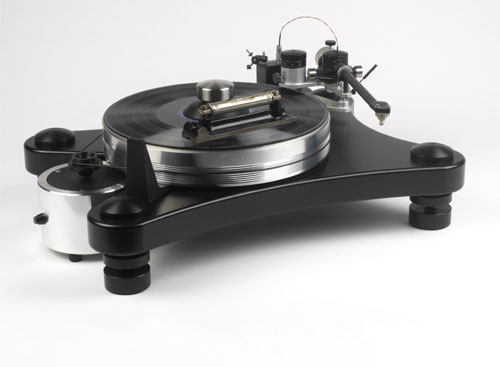Leveling: Because There's Level and Then There's Really, Really Level eveling a record player is absolutely crucial to its correct mechanical and musical performance. Any deviation from level can impact on the bearing and motor, increasing noise from these critical sources and possibly seriously undermining speed accuracy, dynamic range and the noise floor. When getting a record player absolutely level really is only a question of investing the time and taking the care, it’s crazy not to do it. As already mentioned in the tools section, not all spirit levels are created equal, with some offering considerably greater accuracy than others. Buying a really accurate level is a case of doing the research and spending the money, but even that doesn’t guarantee results. Really accurate leveling is the result of painstaking care and attention to the process itself, starting with the supporting surface and finishing with the deck -- or rather, the platter. When it comes to precise adjustment, there’s no substitute for time taken. But there are a few tips that can make achieving optimum results somewhat easier. Make sure that your levels are the right size for the job. Ideally you’ll want both a long level that will bridge the whole rack/shelf and a smaller, more accurate one that will sit comfortably on the platter. We tend to avoid smartphone apps that offer bubble levels as we don’t know how accurate they are and the size of the phone can also be a problem when it comes to positioning. Good, old-fashioned spirit levels are the way to go. Before starting, familiarize yourself with the adjustment system for both the supporting surface and/or the record player. Establish the options, collect the ideal tools required for the job (for example, a correctly sized wrench for tightening lock nuts rather than a pair of pliers or an adjustable wrench) and establish how easy it is to access the adjustment points. It’s no good having a shelf that is adjustable from above if the chassis of the record player covers the access points. Assuming that the shelf is adjustable, start by leveling that, ideally with the record player in situ so that the shelf is loaded. Likewise, ensure that if you are positioning the deck on top of a rack, make sure that all of the equipment is installed, so that the rack won’t shift or settle.
Finally, level the record player itself. That means measuring the level of the platter, fore and aft, across the plane where the tonearm actually tracks the record. Place the level directly onto the platter surface, removing any loose mat or clamping washer that might interfere with positioning. When checking this final setting, make sure that you reverse the spirit level -- it should read precisely the same in both directions -- to remove any error from the tool itself. This is especially important if you are using a very simple, basic level. If you are using one of the circular levels supplied by many turntable manufacturers, mark one edge as a reference and rotate it to check level; the bubble should stay in the same place relative to the reference mark. Finally, bubble position or displacement will vary from one level to another. A large offset in the bubble position on a really accurate level will often indicate an angular error that is almost imperceptible on a basic level, so don’t be confused by this if you are using more than one device.
|

 Work
in one direction -- left to right or front to back -- at a time and be methodical.
Work
in one direction -- left to right or front to back -- at a time and be methodical.